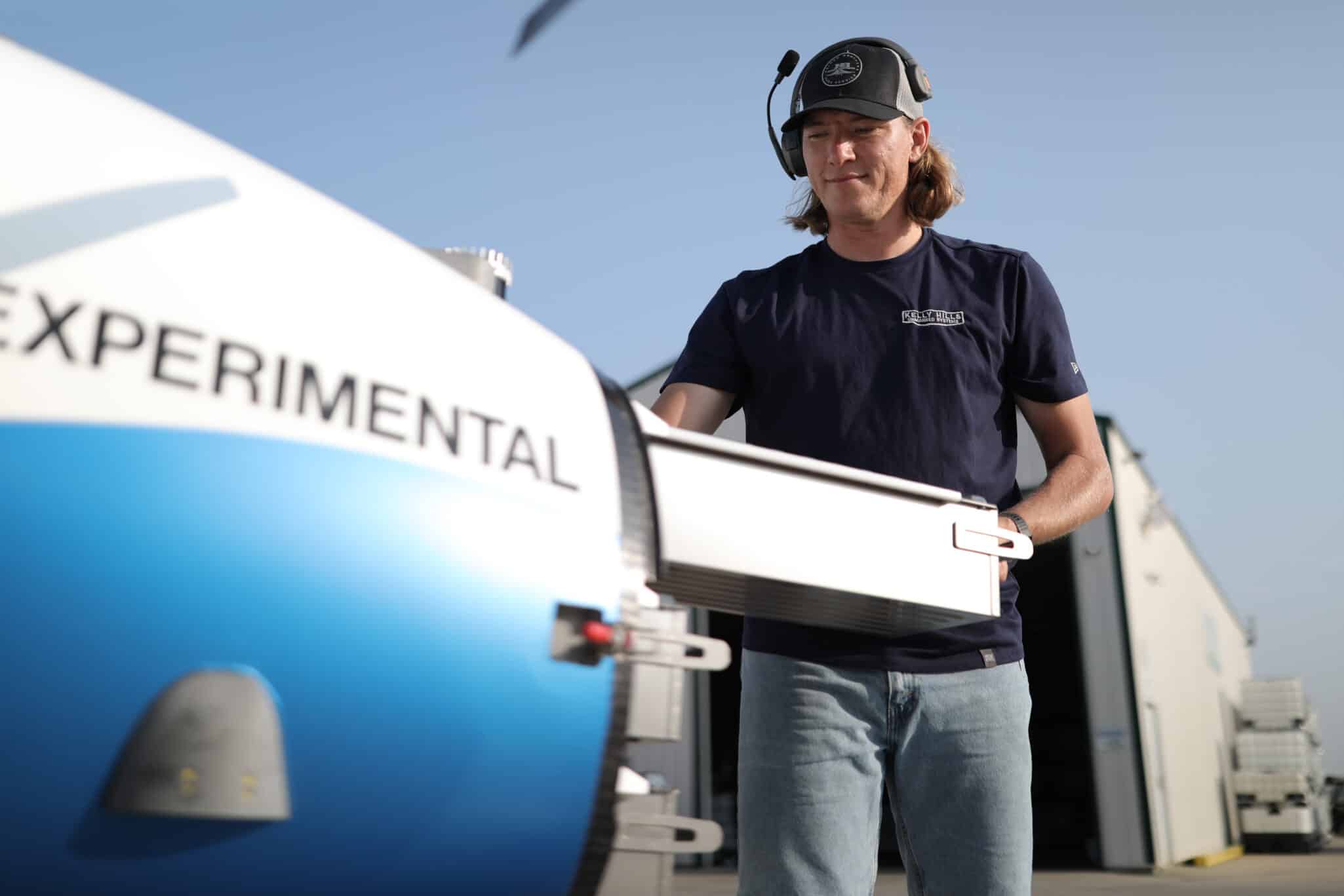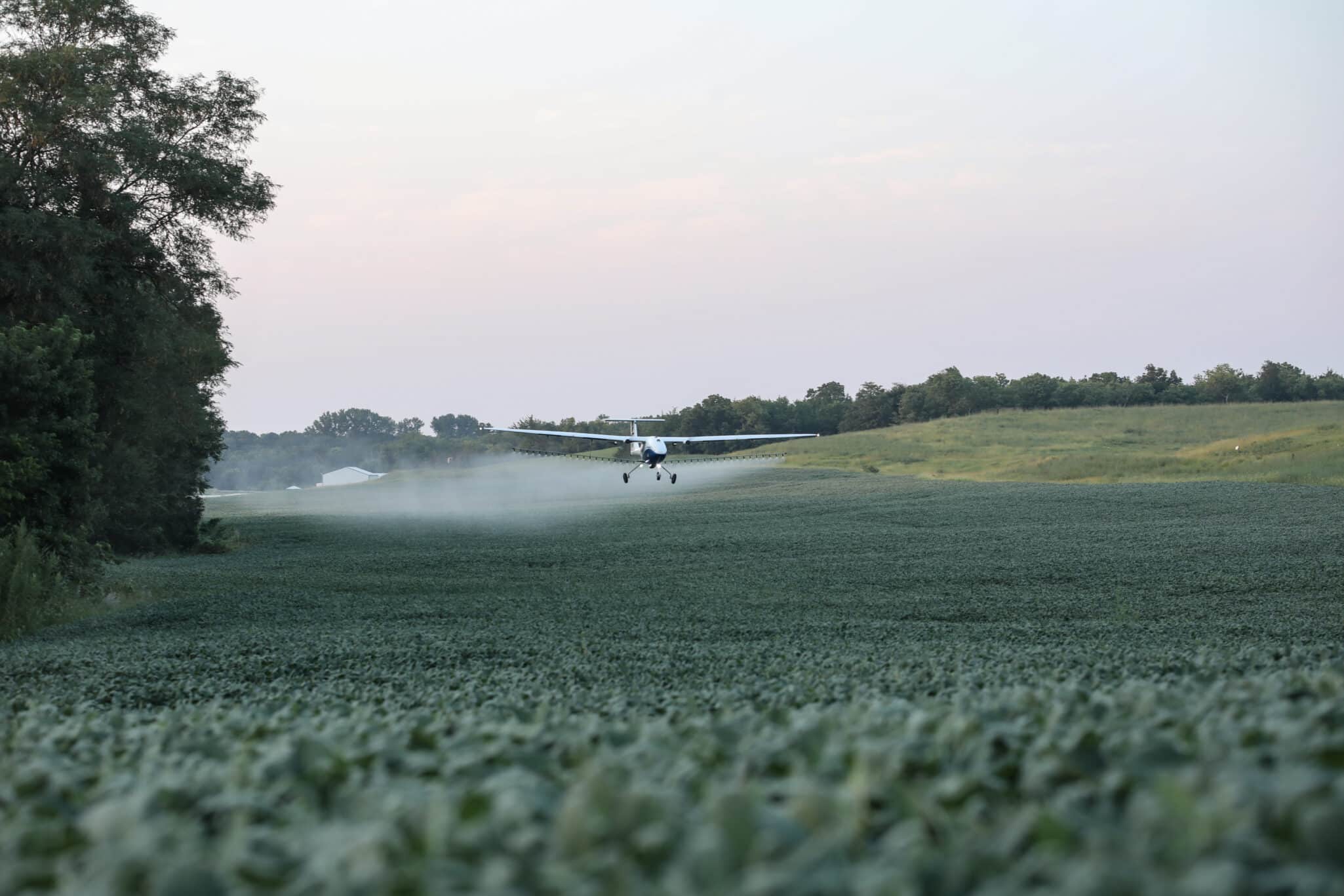Key Takeaways:
- Lukas Koch, CEO of Kelly Hills Unmanned Systems tell us that UAVs are increasingly being adopted for agricultural spraying, data collection, and emergency logistics.
- Key barriers to large-scale UAV deployment include flight duration, payload capacity, and regulatory complexity.
- Farmers are growing more receptive to drone technologies, especially when peer networks validate their performance.
- Integration with data systems and precision tools is key to making UAVs actionable and ROI-driven.
- The sector remains in the early phases of adoption, with significant growth anticipated by 2030.
From the Farm to the Sky: Lukas Koch’s Journey into UAV Innovation

Lukas Koch, CEO of Kelly Hills Unmanned Systems, brings a grounded perspective to aerial innovation. Having grown up on a farm where equipment was often built or modified by hand, Koch was immersed early in the intersection of practicality and technology. After working with venture-backed agtech firms and hands-on experience in drone testing, he founded Kelly Hills as a spinout from the Heinen Brothers—a U.S.-based aerial application company.
The mission: bridge R&D and commercialization for UAVs in agriculture and adjacent sectors like firefighting and remote cargo delivery.
“Testing is great, R&D is great, but if you're going to make it, you've got to sell these products and move on,” Koch explained.
What Kelly Hills Unmanned Systems Offers
Kelly Hills functions as a commercialization partner for agricultural OEMs and drone technology developers, particularly those aiming to enter the U.S. market. The company helps navigate complex regulatory requirements and scale new UAV technologies beyond pilot projects.
The company’s aerial work extends beyond spraying and seeding. It also includes efforts in firefighting and emergency response logistics, with current pilots exploring medical supply delivery to remote areas. On the ground, Kelly Hills is working with international partners to develop swarm robotics that can autonomously move from field to field.
UAVs and the Ag Market: Where the Challenges Lie
1. Flight Time & Payload Capacity
The most immediate technical bottlenecks are short flight times and limited payload. Current spray drones, according to Koch, typically carry 20 gallons and stay airborne for only 5–10 minutes when fully loaded.
“Growers would love a spray drone that sounds like their four-wheeler,” Koch said, alluding to the potential appeal of hybrid-powered systems.
2. Regulatory Complexity
Navigating U.S. airspace is another barrier. While efforts are underway to streamline drone approvals through FAA reauthorization bills, Koch noted that companies are also turning to more permissive countries like New Zealand for early-stage testing.
3. Product Maturity
Koch believes the current generation of UAVs is still early in its lifecycle. Unlike consumer tech, agricultural feedback loops occur annually, which slows iteration.
“We need systems that growers can trust, that work autonomously—like a Roomba but for fields.”
The Role of Data and Integration
UAVs are not just tools for spraying—they are data platforms. Koch emphasized that UAVs work best when integrated with satellite imagery, soil sensors, and other farm management tools.
“The drone becomes the delivery tool. You pair it with high-resolution data, and suddenly you're making site-specific decisions.”
This opens up possibilities in variable rate spraying, pest targeting, and the precise application of biological inputs.
Farmer Perception: From Skepticism to Enthusiasm
Grower sentiment toward UAVs has evolved. Once seen as a novelty or too difficult to manage, drones are now being embraced—especially as peer adoption validates their usefulness.
“Farmers aren't slow to adopt—they're slow to adopt bad tech. But good, proven tools? They'll get on board fast.”
Lukas Koch Looking Ahead to 2030
Koch projects a significant increase in UAV deployment across global agriculture, estimating as many as 3 million agricultural drones in use by the end of the decade. However, he sees drones not as a replacement for traditional equipment, but as part of a broader toolkit.
“Instead of replacing ground rigs, drones might complement them—extending their lifecycle and covering hard-to-reach zones.”
He also envisions a future in which biological inputs and alternative delivery mechanisms—like dust, lasers, or even injection—could redefine how treatments are applied to crops.
Final Thoughts From Lukas Koch
As Kelly Hills Unmanned Systems supports the transition from prototype to commercial readiness, Koch underscores the need for interoperability, maturity, and field-tested results. With market momentum building and grower trust increasing, UAVs appear poised to take a lasting role in global food production.
“You have to make the data actionable. If it's not usable, it won’t scale.”


